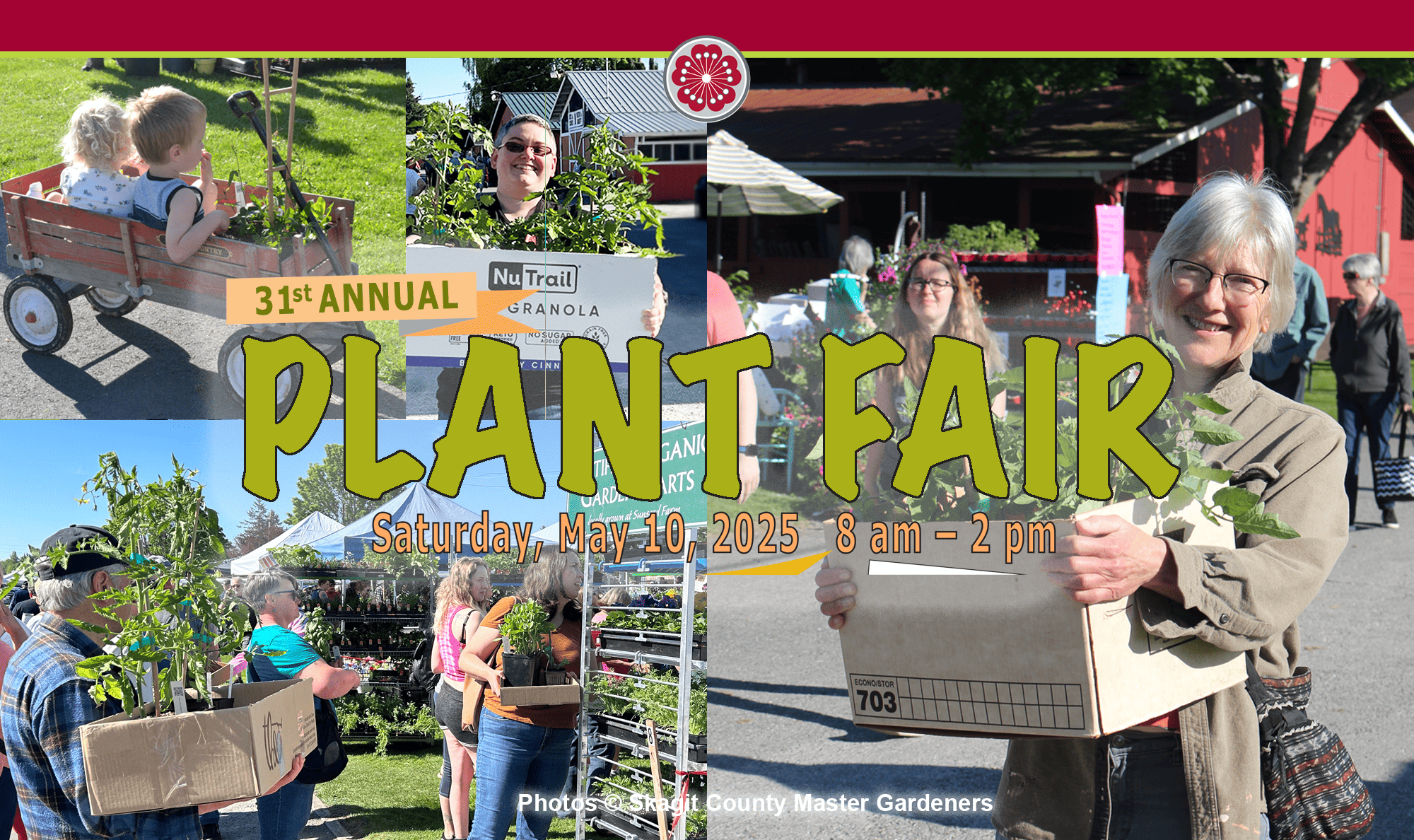

Mark Your Calendar!
Skagit County Master Gardener Plant Fair is Saturday, May 10
Anticipation is Building for the Annual Event on Mother’s Day Weekend
By Kari Ranten, Skagit County WSU Extension Master Gardener

Kari Ranten
Featuring thousands of plants for sale, the Skagit County Master Gardener Plant Fair is a local celebration of spring and gardening.
Gardeners across the region count on the plant fair as a place to purchase quality plants and look forward to gathering inspiration for the coming growing season. Did you know that all of the tomatoes – more than 3,600 plants – available at the plant fair are grown from seed by volunteer WSU Extension Master Gardeners? Not only that, the varieties grown are chosen because they are ideal for our climate.
The 31st annual Plant Fair is set for 8 a.m. to 2 p.m. on Saturday, May 10, 2025, at the Skagit County Fairgrounds. The event and parking are free, enter through the south gate of the fairgrounds. Attendees are encouraged to bring a wagon or wheelbarrow to help transport their selections. Boxes are available at the site and customers can leave purchased plants at a free plant parking area monitored by volunteers as they continue to shop and enjoy the plant fair. An ATM will be available on site.
3,600 Tomato Plants — 2,000 Flowering Annuals
2,000 Vegetable and Herb Starts
Hundreds of Perennials and Native Plants
Small Fruits: Grapes, Figs, Currants, Berries
“As an organization and a community of people who live and love all things gardening, we are looking forward to this amazing annual event,” said Master Gardener Claire Cotnoir, who, along with her husband and fellow Master Gardener Hank Davies, co-chairs the plant fair. “This is our way to inspire all gardeners by offering quality plants suited to growing successfully in our region. We enjoy the opportunity to share information and enthusiasm for gardening, along with educating the public about how to embrace gardening as a way to care for and protect the environment.”
The plant fair will offer thousands of plants for sale, including vegetables, tomatoes, herbs, perennials and native plant varieties. Most of the plants are grown or propagated by master gardener volunteers.
The plant fair is truly a highly anticipated event, as illustrated by those who waited in line at the gates last year. Some called their annual visit to the event a “Mother’s Day weekend tradition” for their family. One smiling woman, with a wheelbarrow in tow, proclaimed “It’s the only holiday I celebrate – Plant Fair Day!”
Need Tips on Growing Tomatoes?
Master Gardener Denny Organ, an expert in growing tomatoes in the region, will provide short workshop-style presentations with tips on planting, pruning and general care for tomatoes between 9 a.m. to noon on Saturday, May 10 at the Master Gardener Demonstration Booth. Between presentations, Denny will be available to answer one-on-one questions about growing tomatoes. Check at the master gardener information booth at the Plant Fair for specific times of the presentations.

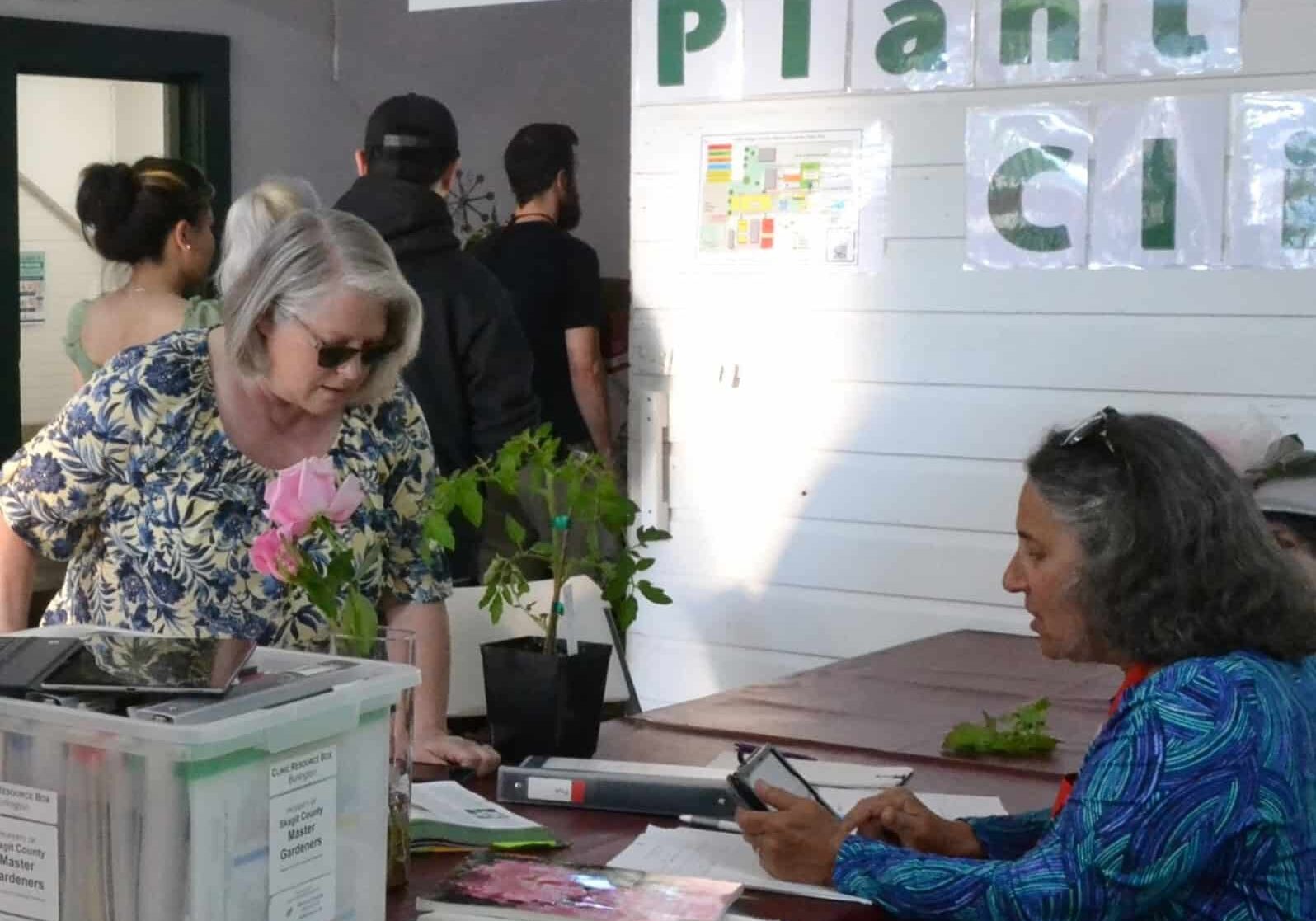
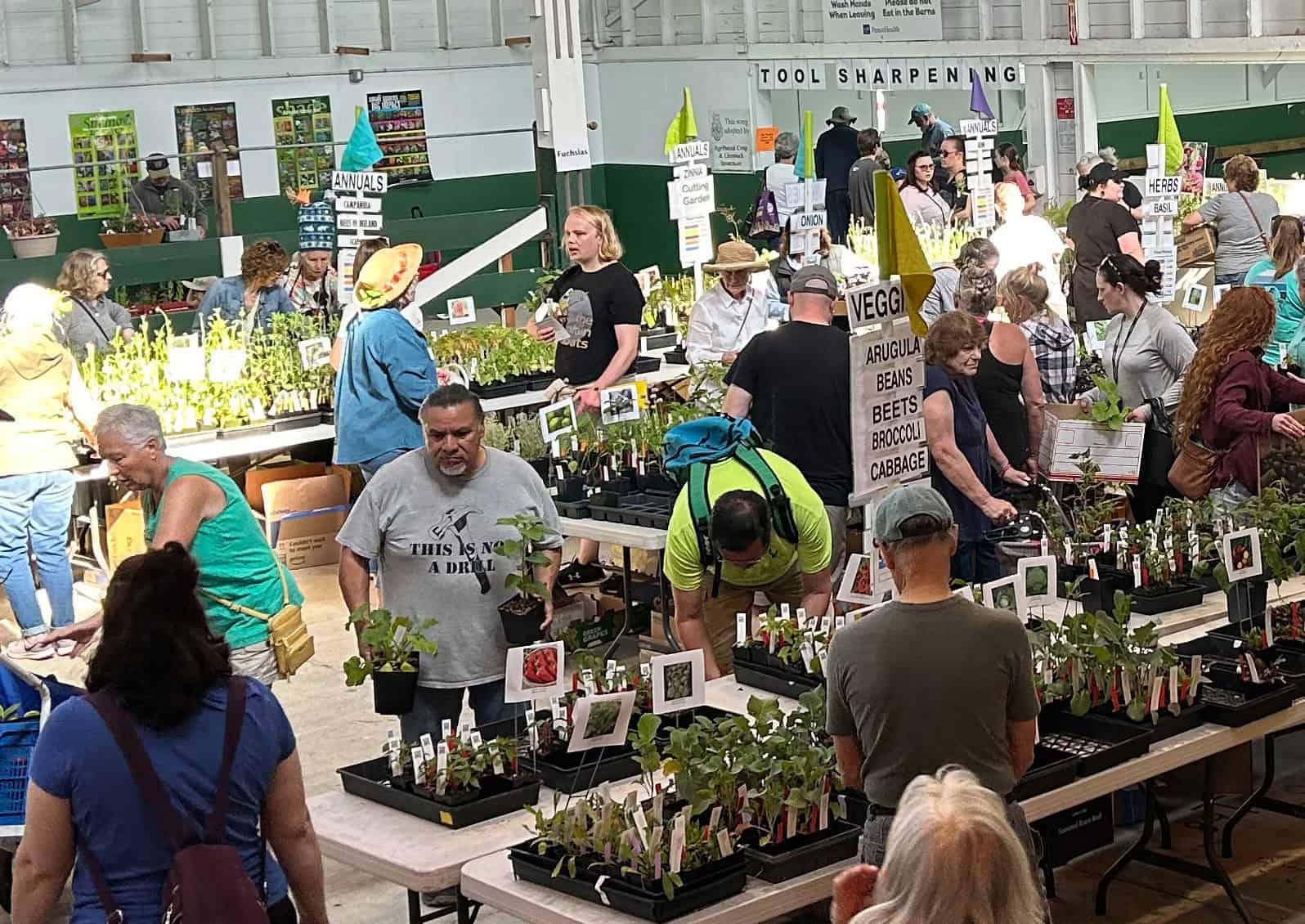
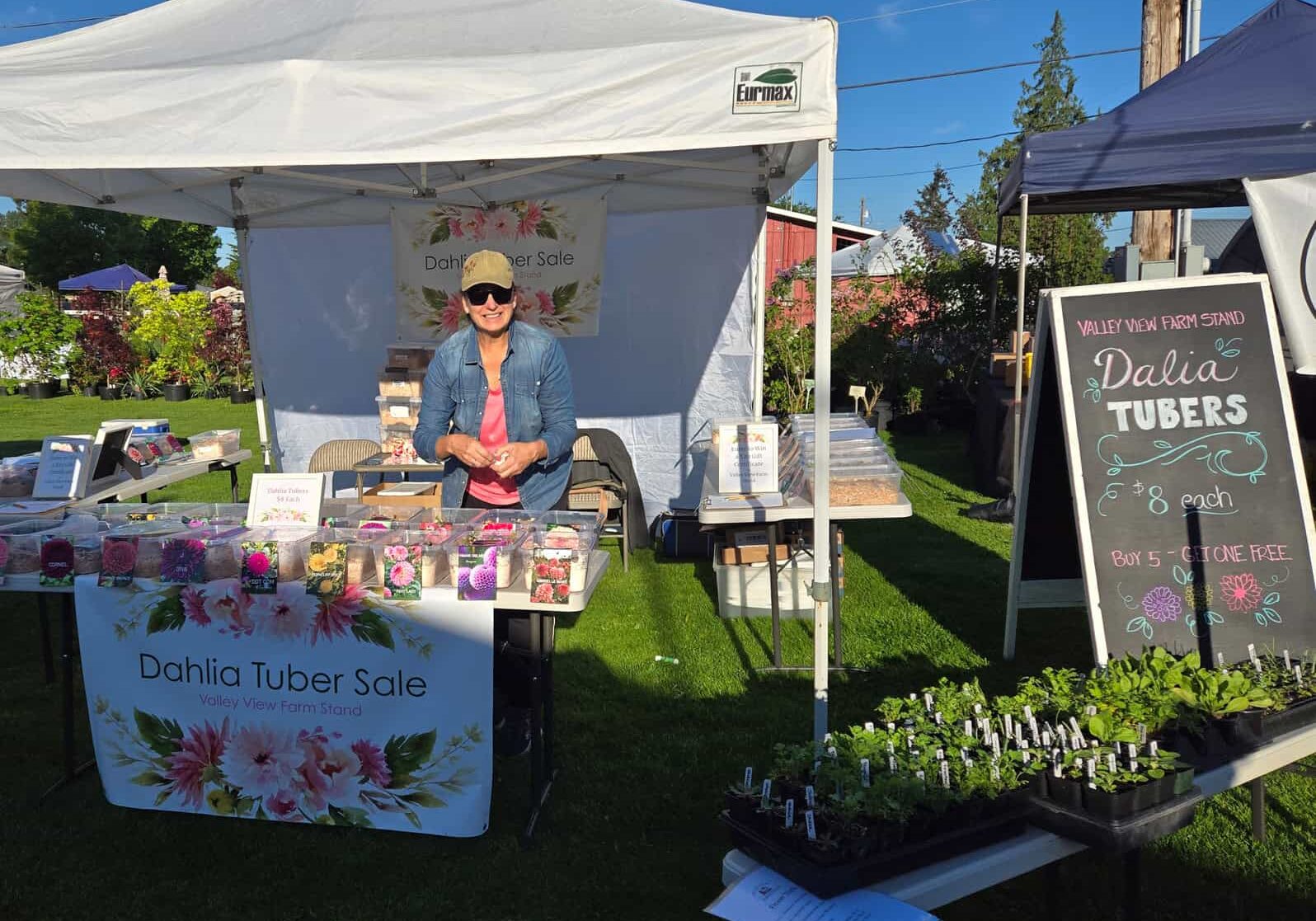
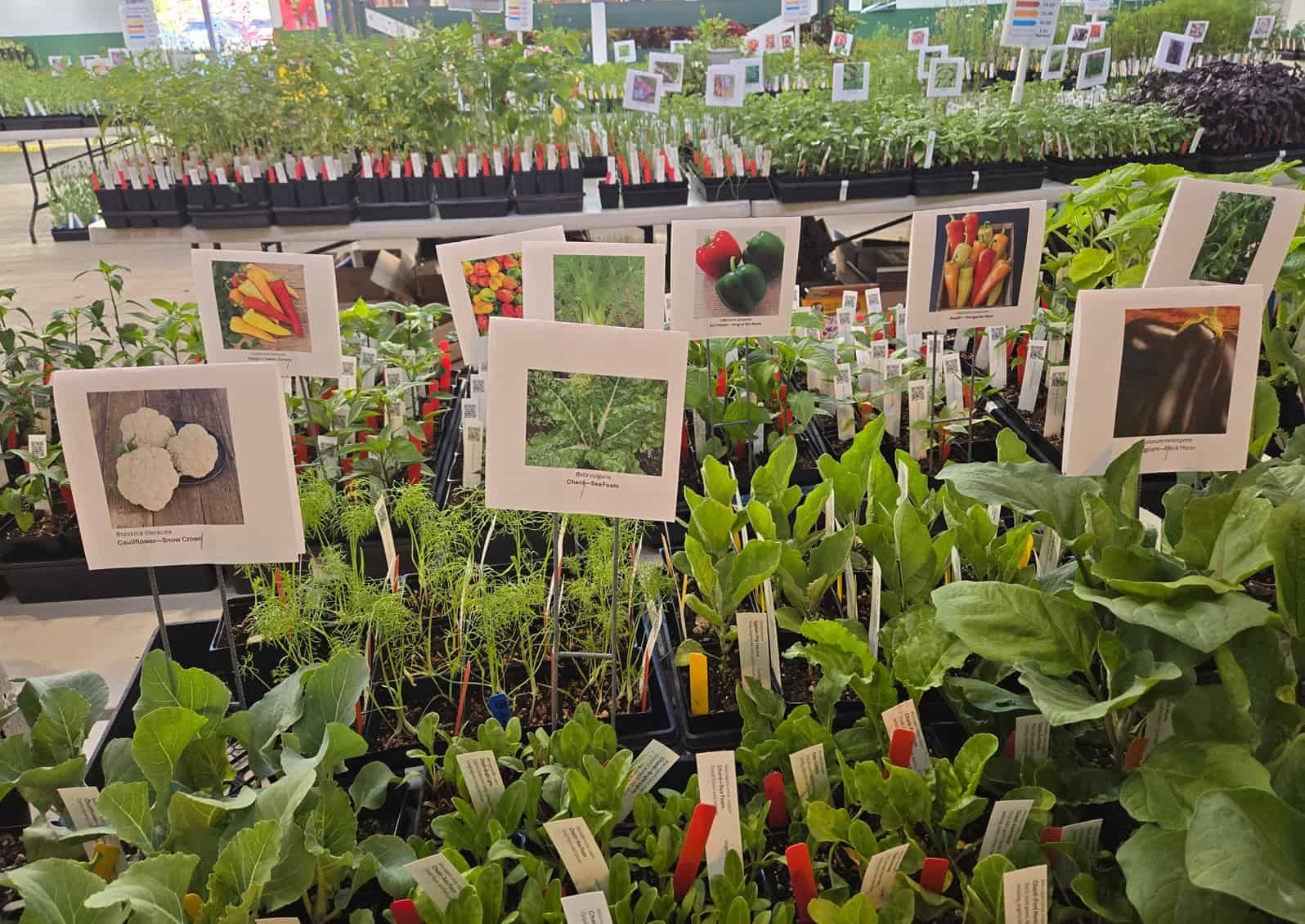
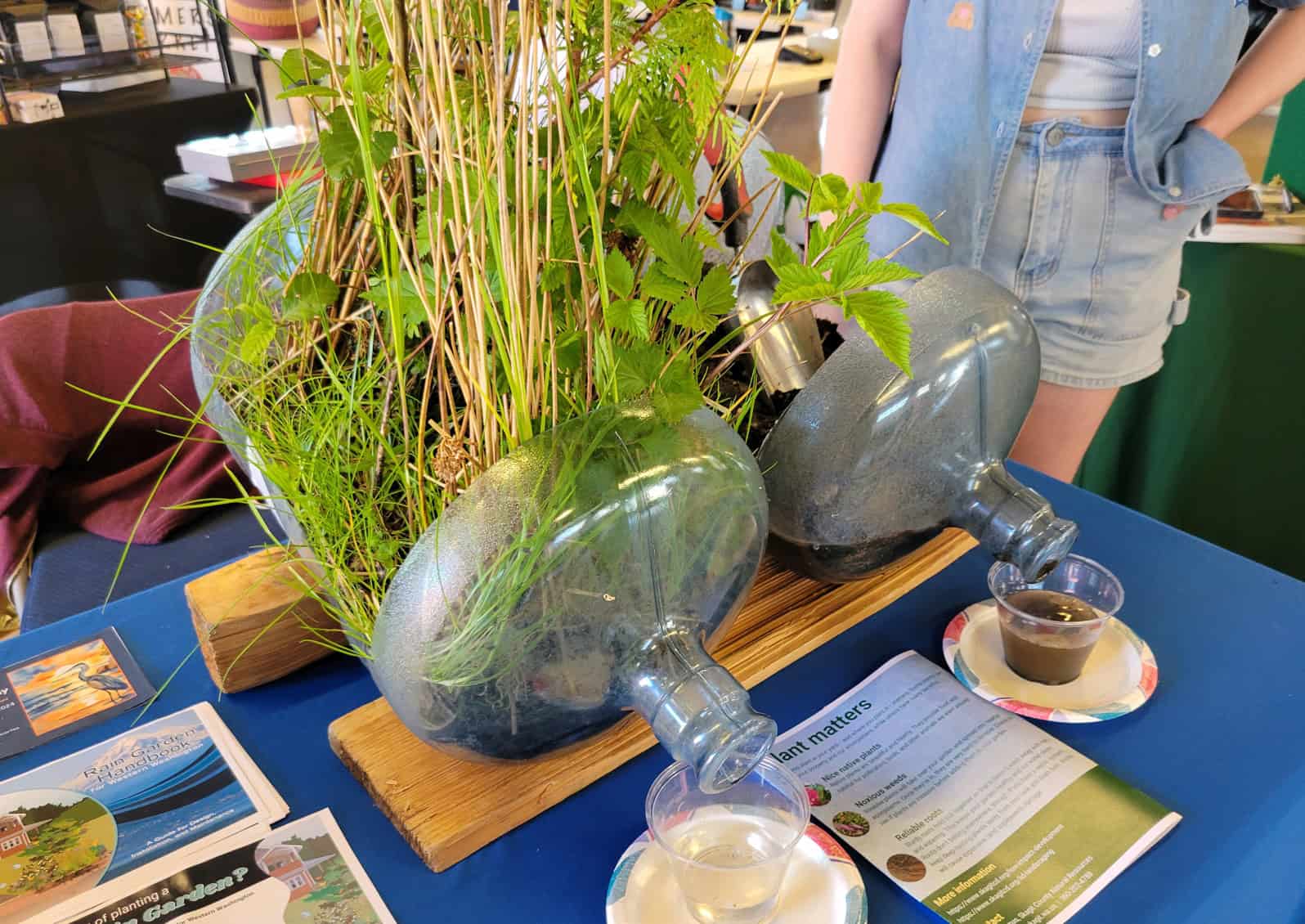
In addition to plant sales, the Plant Fair will feature:
- More than 50 vendors will offer garden accessories, gifts, plants, garden art and hand-crafted items. Several food vendors will also be on site.
- Skagit County Master Gardeners will host an educational booth and display, with a focus on pollinators, firewise gardening and growing tomatoes.
- Master gardeners will staff a Plant Clinic at the fair to help address plant questions or concerns.
- Master gardeners will offer free tool sharpening, with a limit of one tool per customer.
The annual Skagit County Master Gardener Plant Fair is the primary fund-raising event run by the Skagit County Master Gardener Foundation (SCMGF). Proceeds enable the foundation to support master gardener outreach, events, education and activities. Beyond fundraising, the plant fair builds community awareness of the master gardener program, encourages community participation in gardening and growing local food, and inspires people to become master gardener volunteers.
Master gardener volunteers also maintain the Discovery Garden just west of Mount Vernon on Memorial Highway, which is open to the public daily as a showcase for the variety of plants that grow in the region.

Cherry, slicers, salad, paste, and dwarf are among the fifty tomato varieties available at the Plant Fair. Download the list and make your selections.
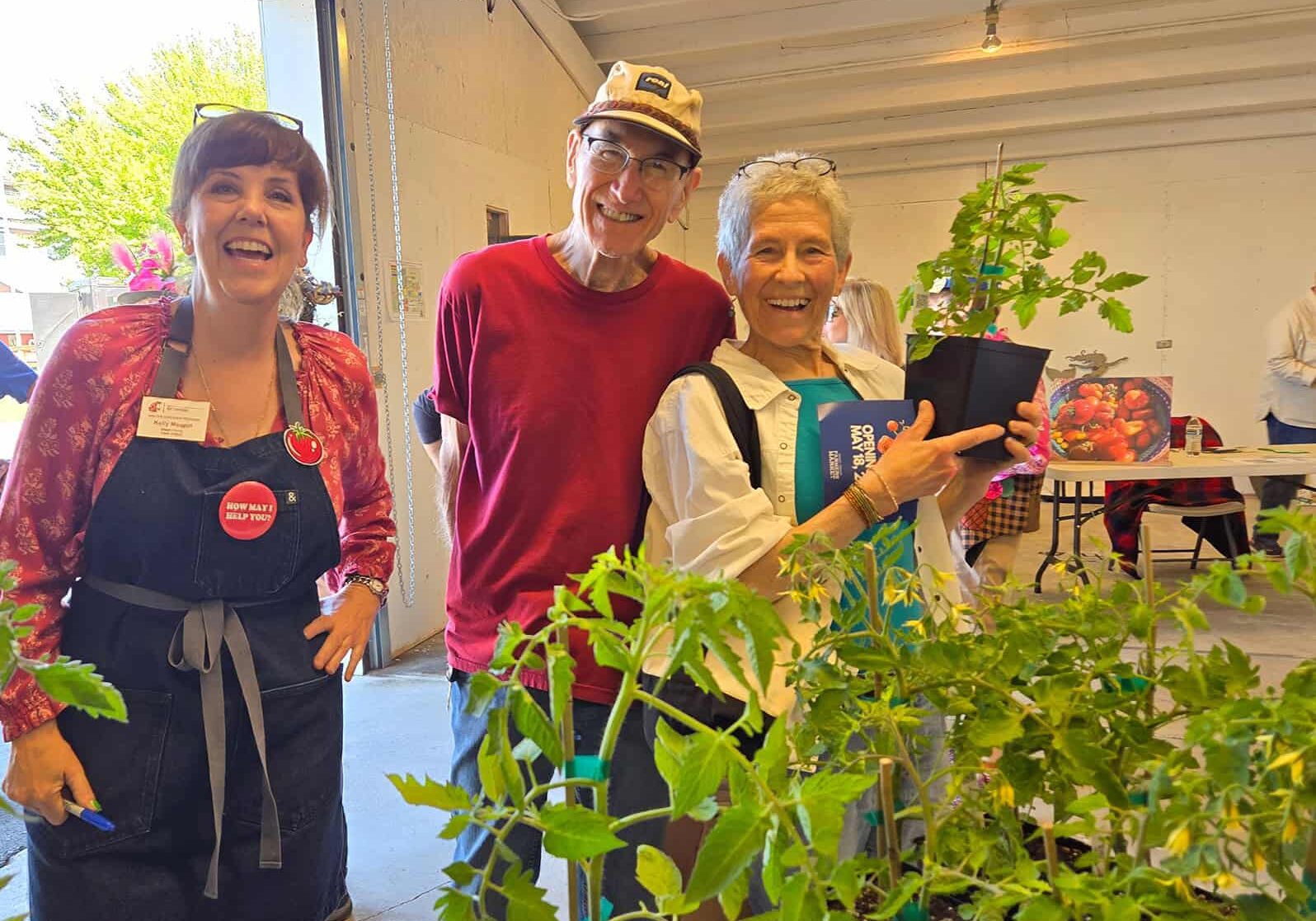
Now you own a lovely tomato plant. Read on to help your plant grow and thrive, producing delicious tomatoes throughout the season.
Soon to be a proud owner of a tomato plant? What's next?
Many Skagit County Master Gardener Plant Fair customers are laser focused on one thing: Buying tomato plants. As they check out, with plants in hand, the question many have is what to do next with these amazing plants?
Past customers, many who have purchased tomatoes at the plant fair for several years running, express satisfaction with the product. Of course, each growing season is unique and 2024 presented some challenges with rain and cooler temperatures. Between the May plant fair and the end of the 2024 growing season, customers describe the tomato plants produced by master gardeners as healthy, hardy and offering a “really great yield.”

In the fall, master gardeners taste test 30+ varieties of tomatoes to select the varieties to grow for the Plant Fair.
Master gardeners grow all of the tomato plants from seed. The process begins in February to have them ready for the plant fair. Lights, heat mats and tender loving care help nurture the seeds to germination and on to developing into fledgling plants. As they grow, the tomatoes are transplanted into six-pack plugs, then four-inch pots and ultimately to the one-gallon pots available for sale.
Going into the plant fair, customers may check out the list of varieties available on the Skagit County Master Gardener website (skagitmg.org/) and make selections based on a desire for snacking, sauces, slicing and other tomato uses. All varieties are carefully chosen by master gardeners and tested for growing conditions in Skagit County. In addition, for a comprehensive A-Z listing of tomato varieties featuring details on each one, check out the Skagit County Master Gardener Tomato Variety Selection Tool: https://skagitmg.org/home/food/tomato-varieties/.
At the end of each season, master gardeners gather for a taste-test session of fruit from their plants to help inform future variety selection. Some of the varieties available for purchase at the plant fair will be marked as “Winner of Our MG Tomato Tasting Event.”
Tomatoes: What do I do next?
So, once you take home tomato plants at the mid-May plant fair, what should you do next to have success? Here are a few tips on how to plant and care for these fledgling tomatoes from master gardeners who head up the “Tomato Team” and other resources:
Hardening off: The tomato plants, in one-gallon pots, will have spent more than a month in an unheated greenhouse leading up to the plant sale. As temperatures warm, they will need gradual introduction to sunlight and the outdoors. Place the plants in a sheltered location near the house or other structure and expose the plants to indirect sunlight gradually. Start with one hour on the first day and add one hour each day, building up to a full day. Plants can tolerate direct sunlight after three to five days.
According to the Washington State University Extension Fact Sheet FS145E titled Growing Tomatoes in Home Gardens,“After a week, leave plants outside overnight. If temperatures drop below 50°F, keep them indoors . . . Do not plant them before the frost-free date for your area because spring frost can kill young tomato plants.” Plants should not be transplanted unprotected until nighttime temperatures stay above 45 to 50 degrees, which may not be until June, according to Vegetable Gardening in the Pacific Northwest by Seattle author Lorene Edwards Forkner.

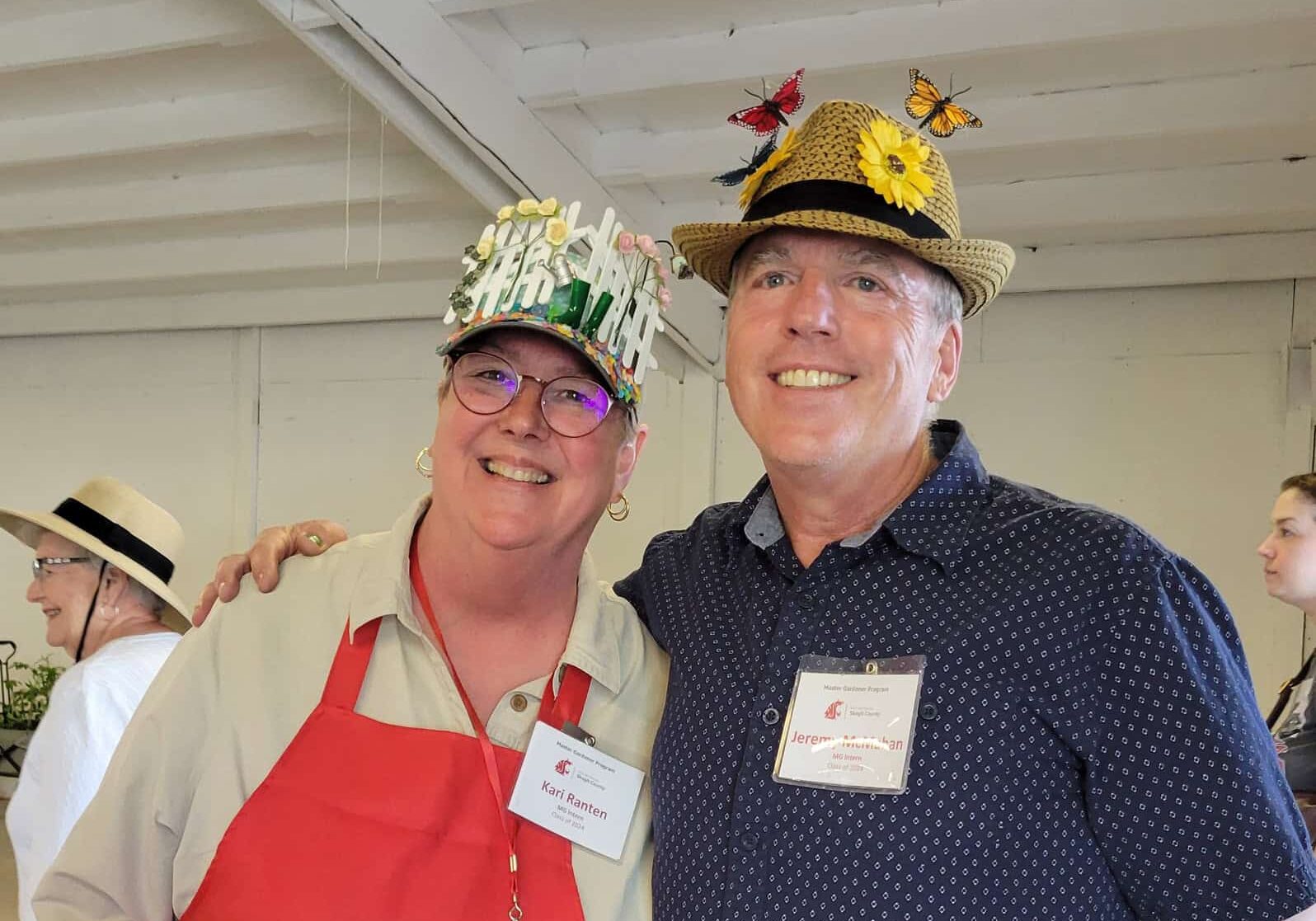
If the people in the fun, creative hats (master gardeners) look a little giddy, it is because they have crossed the finish line, successfully raising nearly 10,000 healthy, happy plants for you to bring home and enjoy this summer.
Planting: Whether using a container or transplanting into the ground, plant in well-drained soil in a sunny location. Plant in a deep hole and cover the stem up to the bottom leaves with soil to inspire root growth and plant development.
Trench planting is also an option. Trench planting involves digging a trench about six inches deep, adding a tablespoon of super phosphate to the soil (well mixed), and laying the whole plant in the ground with only the very top of the plant exposed to the sunlight. For more information about trench planting, go to North Carolina State University Extension Publications, Growing Tomatoes in the Home Garden, https://content.ces.ncsu.edu/growing-tomatoes-in-the-home-garden.
Growing in pots: Tomatoes do not like to be confined to small pots for too long. The master gardener tomatoes are sold in one-gallon pots, which will work for a while, however, be sure to have 10-gallon grow bags, pots, or buckets with holes drilled in the bottom at the ready when overnight temperatures are appropriate to transplant outdoors for the season. Remember, tomato plant roots can go more than six inches deep into the soil so the more room you give them in a pot the happier they will be. Also, consider growing determinate plants in pots and indeterminate in the ground if possible. Determinate plants top off at around five feet tall and are easier to grow in pots than indeterminate which are vining and will grow until fall frost. Another wonderful option available for pots or patio growing this year are dwarf varieties, also available at the plant fair.
Watering: Tomatoes will perform better if they are a little dry rather than soggy. For plants in pots, providing a plastic roof or clear plastic cloche to keep the rain off is helpful, but not required. “Water regularly and deeply since tomatoes are deep-rooted plants, but avoid overhead irrigation, which can encourage disease,” according to “Sunset Western Garden Book of Edibles.” Author Forkner suggests reducing watering near the end of the season to encourage fruit ripening.
Support: Indeterminate tomatoes, those that grow like vines, benefit from supports such as cages, trellises or pole supports. Determinate varieties are more compact and bushier, reaching a fixed height.
Light and exposure: In the Pacific Northwest, placing pots along a south-facing wall is best for tomato success. A garden space with full sun for at least six hours per day, according to the Washington State University Extension Fact Sheet FS145E.
Potential problems: Tomatoes can be impacted by a variety of diseases and pests. Research and select cultivars that are disease resistant. Washington State University Extension Fact Sheet FS145E lists a variety of potential problems, including:
- Late blight: The fungal disease appears as gray-green coloration on leaves, stems and fruit, turning to dark blotches on the fruit. The fact sheet suggests avoiding over watering, removing infected plants or plant parts when symptoms are noticed, but do not compost them. Give plants ample space to support air circulation.
- Slugs: Common in Western Washington, slugs can completely consume younger plants, damage foliage of more mature plants and cause “hollowing damage” on fruit. To protect plants, remove weeds and debris, encourage predators; hand-pick and kill slugs that feed at night and use chemical-based baits with caution.
- Blossom End Rot: According to the University of Wisconsin, Wisconsin Division of Horticulture Extension, this condition often occurs on the first fruits formed on plants. Initially, water-soaked spots (resembling small bruises) appear, most often on the bottoms of fruits and include dark, leathery, sunken areas on the blossom end of the tomato. This is caused by a lack of calcium uptake and conditions where there is too much or too little water. Water evenly and mulch the soil to retain moisture during dry periods. Avoid practices that would damage roots, such as cultivating too near plants thereby cutting roots, use a good Cal-Mag fertilizer and do not “wash” out soil nutrient with heavy over watering.
- An additional resource regarding pests and diseases with tomatoes is the University of Maryland Extension’s Key to Common Problems of Tomatoes (https://extension.umd.edu/resource/key-common-problems-tomatoes/) and Washington State University CAHNRS and WSU Extension Hortsense website (https://hortsense.cahnrs.wsu.edu/).
Harvest and use: Harvest when the fruit reaches mature color. Tomatoes can be used in a wide range of preparations from fresh to frozen or dried to canned. For more information, check out the National Center for Home Food Preservation (http://www.uga.edu/nchfp/) or Oregon State University Extension Service’s site focused on canning tomatoes and tomato products (https://extension.oregonstate.edu/catalog/pub/pnw300-s).
REFERENCES:
Fredericks, G., Cowan, J. and Daniels, C. (2014) Vegetables: Growing Tomatoes in Home Gardens. Washington State University Extension Fact Sheet #FS145E. https://s3.wp.wsu.edu/uploads/sites/2070/2019/09/FS145E.pdf
Forkner, L. (2012) Vegetable Gardening in the Pacific Northwest. Portland, OR. Timber Press.
North Carolina State University Extension Publications, Growing Tomatoes in the Home Garden. https://content.ces.ncsu.edu/growing-tomatoes-in-the-home-garden
Skagit County Master Gardener Tomato Variety Selection Tool: https://skagitmg.org/home/food/tomato-varieties/
Sunset. (2010) Sunset Western Garden Book of Edibles: The Complete A to Z Guide to Growing Your Own Vegetables, Herbs, and Fruits.” Menlo Park, California. Sunset Publishing Corporation.
University of Maryland Extension. https://extension.umd.edu/resource/key-common-problems-tomatoes/
University of Wisconsin-Madison, Wisconsin Horticulture Division of Extension. https://hort.extension.wisc.edu/articles/blossom-end-rot/
Washington State University CAHNRS and WSU Extension Hortsense. https://hortsense.cahnrs.wsu.edu/

Looking Ahead to Summer—
Join us for a Free Open House
Saturday, June 28 — 10 am - 2 pm
Explore the three gardens in one location: the WSU Extension Master Gardener Discovery Garden, the NW Fruit Garden, and the Salal Native Plant Garden at the Discovery Day Open House. Talk to the volunteers that manage each of the gardens. Subscribe here for more information. >
ABOUT THE AUTHOR:
Kari Ranten is a retired journalist and health care communicator who became a certified Skagit County WSU Extension Master Gardener in 2024.
Questions about home gardening or becoming a master gardener may be directed to Skagit County WSU Extension Office, 11768 Westar Lane, Suite A, Burlington, WA 98233; by phone: 360-428-4270; or via the website: www.skagit.wsu.edu/mg
Washington State University Extension helps people develop leadership skills and use research-based knowledge to improve economic status and quality of life. Cooperating agencies: Washington State University, US Department of Agriculture, and Skagit County. Extension programs and policies are available to all without discrimination. To request disability accommodations contact us at least ten days in advance.
